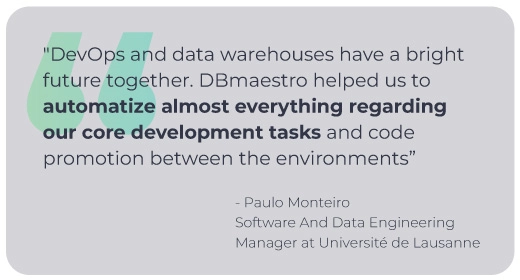Automating database deployments is critical for organizations aiming to streamline their release processes and maintain a competitive edge. By implementing database CI/CD pipelines, teams can significantly reduce deployment times, minimize errors, and ensure consistent, reliable releases. This comprehensive guide will walk you through the key steps, best practices, and tools needed to successfully automate your database deployments.
What You’ll Learn:
- The benefits of automating database deployments
- Key steps to implement database CI/CD
- Best practices for database CI/CD pipelines
- How to overcome common challenges
- Pro tips for streamlining your database CI/CD process
The Benefits of Automating Database Deployments
Automating database deployments through CI/CD pipelines offers numerous advantages:
- Faster delivery cycles: Automation reduces manual intervention, speeding up the deployment process.
- Reduced errors: Automated processes minimize human errors and ensure consistency across deployments.
- Improved team collaboration: CI/CD pipelines promote better communication between development and database teams.
- Enhanced deployment consistency: Automated deployments ensure that changes are applied uniformly across all environments.
- Increased productivity: By automating routine tasks, teams can focus on more strategic initiatives.
Key Steps to Implementing Database CI/CD
Version Control for Database Changes
Implementing version control for database changes is a fundamental step in automating deployments. This practice allows teams to track modifications to schema, configurations, and data over time.
Pro Tip: Create a dedicated branch for database changes to separate them from application code, making it easier to manage and review database-specific modifications.
Automated Testing for Database Deployments
Automated testing is crucial for ensuring the reliability of database deployments. Implement comprehensive tests that cover:
- Schema validation
- Data integrity checks
- Performance benchmarks
- Rollback procedures
By automating these tests, you can catch potential issues early in the development cycle and prevent them from reaching production.
Continuous Integration with Database Changes
Integrating database changes into your CI pipeline is essential for smooth deployments and early error detection. This process involves:
- Automatically building the database from source control
- Running automated tests on each build
- Generating deployment scripts for successful builds
- Notifying team members of build status and any issues
Best Practices for Database CI/CD Pipelines
To ensure your database CI/CD pipelines are reliable and efficient, consider the following best practices:
- Use idempotent scripts: Ensure your deployment scripts can be run multiple times without causing unintended side effects.
- Implement rollback strategies: Always have a plan to revert changes if something goes wrong during deployment.
- Maintain separate environments: Set up distinct environments for development, testing, staging, and production to validate changes at each stage.
- Automate schema comparisons: Use tools to compare and synchronize schema changes between environments.
- Implement security and compliance checks: Integrate security scans and compliance checks into your pipeline to ensure adherence to organizational policies.
- Monitor database performance: Set up monitoring to track the impact of deployments on database performance.
Pro Tip: Maintain a separate staging environment that closely mirrors production to validate changes before deploying to live systems.
Overcoming Common Challenges in Database CI/CD
While implementing database CI/CD, you may encounter several challenges:
- Large datasets: When dealing with massive amounts of data, consider using data subsetting techniques or synthetic data for testing.
- Handling stateful data: Develop strategies to manage and version control data changes alongside schema modifications.
- Complex schema changes: Break down complex changes into smaller, manageable increments to reduce risk and simplify rollbacks.
- Cross-database dependencies: Carefully manage and test changes that affect multiple databases or systems.
Pro Tips for Streamlining Database CI/CD
- Embrace database refactoring: Regularly review and optimize your database schema to improve performance and maintainability.
- Implement feature flags: Use feature flags to control the activation of new database features, allowing for easier rollbacks if issues arise.
- Automate documentation: Generate and update database documentation as part of your CI/CD pipeline to keep it current.
- Leverage database virtualization: Use database virtualization techniques to create lightweight copies of production data for testing and development.
- Implement blue-green deployments: Utilize blue-green deployment strategies to minimize downtime and risk during database updates.
Key Takeaways:
- Automating database deployments with CI/CD pipelines significantly improves release speed, quality, and consistency.
- Version control, automated testing, and continuous integration are crucial components of a successful database CI/CD strategy.
- Implementing best practices and overcoming common challenges are essential for optimizing your database deployment process.
- Regular refinement and adoption of advanced techniques can further streamline your database CI/CD pipeline.
By implementing these strategies and best practices, you can successfully automate your database deployments using CI/CD pipelines. This approach will not only accelerate your release cycles but also improve the overall quality and reliability of your database changes. As you continue to refine your process, you’ll find that database CI/CD becomes an integral part of your organization’s DevOps culture, fostering collaboration and driving innovation.
Remember, tools like DBmaestro can significantly simplify the implementation of database CI/CD by providing robust version control, automated testing, and deployment capabilities specifically designed for database environments. By leveraging such specialized tools alongside your existing CI/CD infrastructure, you can create a seamless, efficient pipeline for managing database changes across your entire software development lifecycle.








